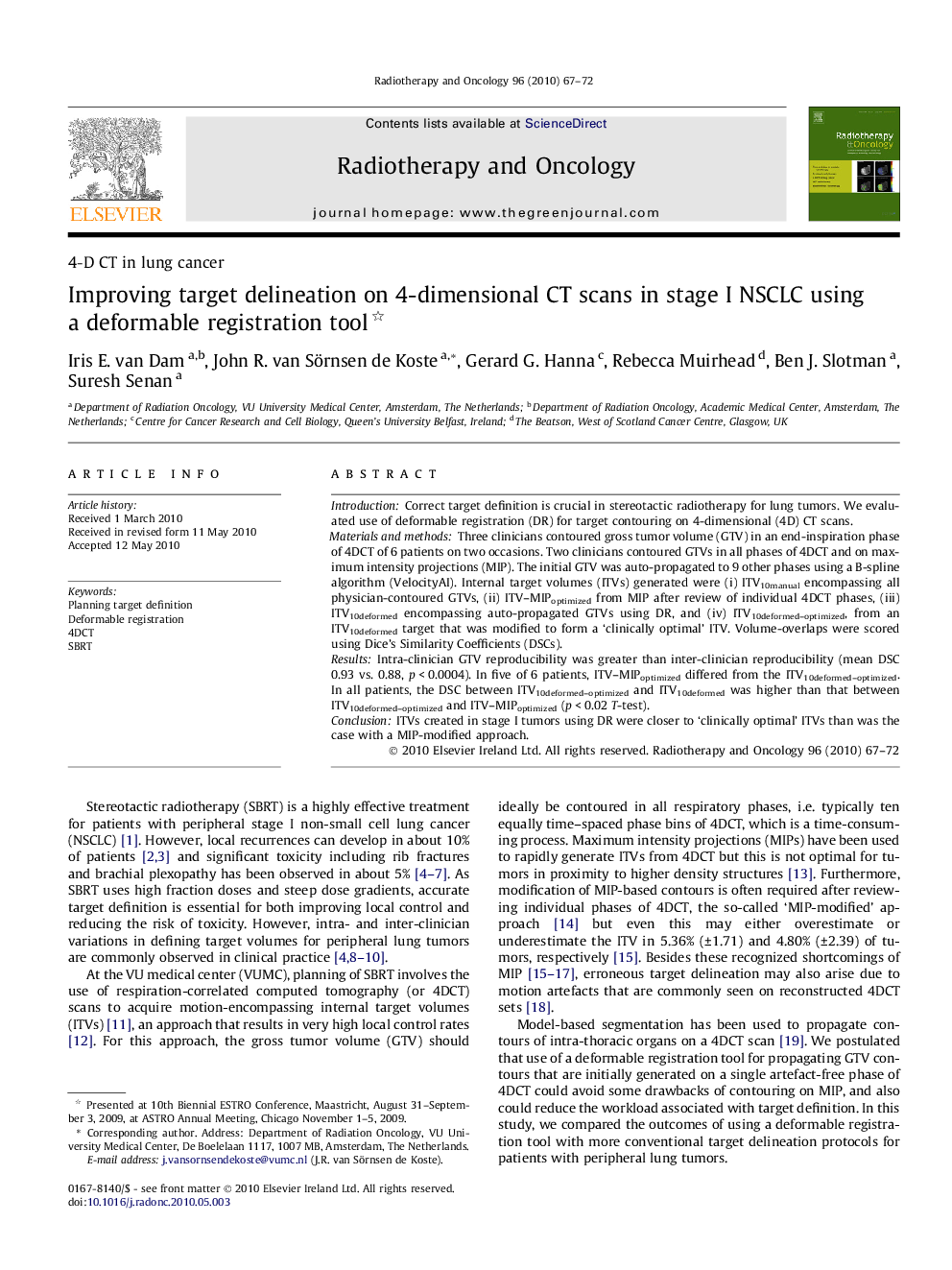| Article ID | Journal | Published Year | Pages | File Type |
|---|---|---|---|---|
| 2158976 | Radiotherapy and Oncology | 2010 | 6 Pages |
IntroductionCorrect target definition is crucial in stereotactic radiotherapy for lung tumors. We evaluated use of deformable registration (DR) for target contouring on 4-dimensional (4D) CT scans.Materials and methodsThree clinicians contoured gross tumor volume (GTV) in an end-inspiration phase of 4DCT of 6 patients on two occasions. Two clinicians contoured GTVs in all phases of 4DCT and on maximum intensity projections (MIP). The initial GTV was auto-propagated to 9 other phases using a B-spline algorithm (VelocityAI). Internal target volumes (ITVs) generated were (i) ITV10manual encompassing all physician-contoured GTVs, (ii) ITV–MIPoptimized from MIP after review of individual 4DCT phases, (iii) ITV10deformed encompassing auto-propagated GTVs using DR, and (iv) ITV10deformed–optimized, from an ITV10deformed target that was modified to form a ‘clinically optimal’ ITV. Volume-overlaps were scored using Dice’s Similarity Coefficients (DSCs).ResultsIntra-clinician GTV reproducibility was greater than inter-clinician reproducibility (mean DSC 0.93 vs. 0.88, p < 0.0004). In five of 6 patients, ITV–MIPoptimized differed from the ITV10deformed–optimized. In all patients, the DSC between ITV10deformed–optimized and ITV10deformed was higher than that between ITV10deformed–optimized and ITV–MIPoptimized (p < 0.02 T-test).ConclusionITVs created in stage I tumors using DR were closer to ‘clinically optimal’ ITVs than was the case with a MIP-modified approach.
